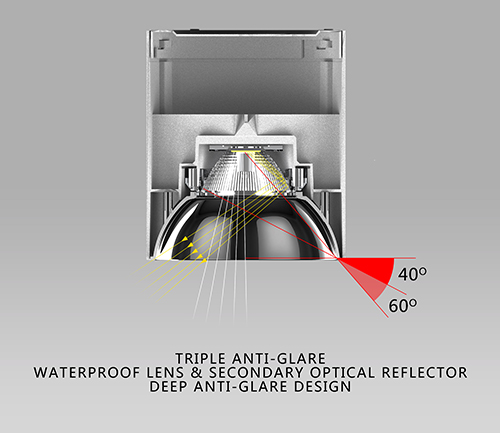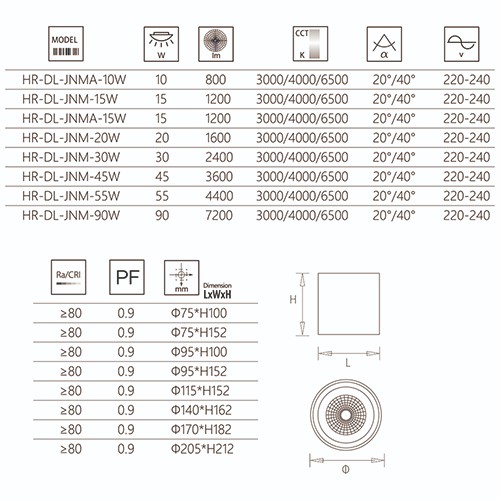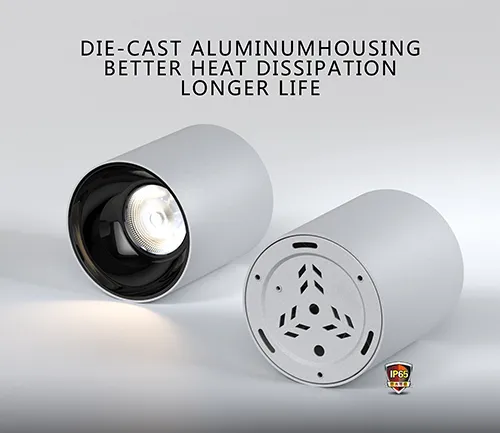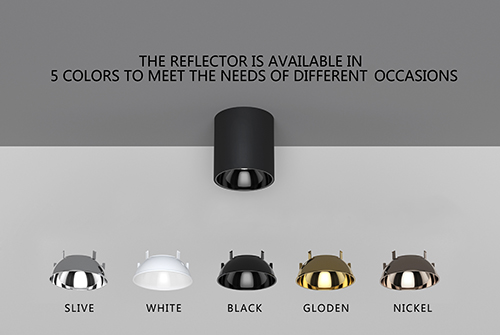How do I know which LED light is brighter? Lumens vs. Watts, which is more important?
LED lighting has become the mainstream choice for modern homes, offices, businesses, and public places. Due to their high efficiency, long life, and low energy consumption, LED lamps have rapidly replaced traditional incandescent and fluorescent lamps in the past decade. However, when choosing LED lighting, consumers often encounter a common problem: how to judge which LED lighting is brighter? Among the many parameters, lumens (lm) and watts (W) are the two most common indicators, which represent brightness and power consumption respectively.
So, which is a better measure of the brightness of LED lamps, lumens or watts? What is the relationship between them? This article will delve into the meaning of these two concepts and help consumers make more informed decisions when purchasing LED lighting.

Lumens vs. Watts: What does it mean?
Before understanding lumens and watts, you first need to clarify the basic concepts of these two terms. They are important criteria for measuring the performance of LED lamps, but each has different meanings and uses.
1. Lumens
Lumen (lm) is a unit of measurement for the brightness of a light source. In simple terms, the higher the lumen value, the brighter the light a lamp can emit. Lumens are directly related to the brightness perceived by the eye, and different light sources, bulbs, and LED lamps have different lumen values. A bulb with a higher lumen value means that it emits brighter light and is suitable for lighting large areas or environments that require strong light.
For example, a 100-watt incandescent bulb can produce approximately 1,600 lumens of light output, while a 12-watt LED bulb can usually produce the same or higher brightness output. Therefore, the lumen value can help consumers determine the actual brightness of a lamp.
2. Watts
Watts (W) is a unit of measurement for power consumption, which is used to indicate the amount of electricity consumed by a lamp. Different light sources have different energy efficiencies, and the higher the wattage value, the more electricity a lamp needs to consume. However, the wattage value does not directly reflect the brightness of a lamp. Traditional incandescent bulbs are often measured in watts (e.g., a 60-watt incandescent bulb is brighter than a 40-watt one), but LED lamps work differently than traditional bulbs, so using watts to measure brightness is not appropriate.
Compared to traditional bulbs, LED lamps can produce the same brightness with less power consumption. For example, a 12-watt LED bulb can produce the same brightness as a 60-watt incandescent bulb, and LED lamps with lower wattage can provide more light output with higher energy efficiency.
Lumens and Watts: What's the Relationship?
Although lumens and watts are two different parameters, there is a certain relationship between them. In simple terms, lumens represent brightness and watts represent power consumption, and the two are related through luminous efficacy (lm/W). Luminous efficacy refers to how many lumens of light a light source can produce for every watt of power consumed. Higher luminous efficacy means that the lamp can convert electrical energy into light energy more efficiently, which is manifested as brighter and more energy-efficient lighting.
For example, if a 12-watt LED bulb produces 1,200 lumens of light output, its light efficiency is 100 lumens per watt. In contrast, traditional incandescent bulbs usually have a light efficiency of only 10-15 lumens per watt, which is why LED bulbs can provide the same brightness while consuming less electricity.

Lumens vs. Watts: What to choose?
When choosing LED lighting fixtures, consumers should focus on lumens rather than watts. Lumens more directly reflect the brightness of the lamp, while watts are mainly used to reflect the energy consumption of the lamp. Understanding the difference between the two can help consumers make more appropriate purchasing decisions.
1. Why are lumens more important?
Lumens are the standard for measuring brightness, and brightness is the most critical indicator for any lighting needs. If your goal is to ensure sufficient light, especially for reading, working or other occasions that require high brightness, then the lumen value should be your most important factor. No matter what the wattage value of the LED lamp is, as long as its lumen value is high enough, it can meet the required lighting effect.
For example, when choosing an LED bulb, if you need bright lighting in a large room, a lamp with a higher lumen value (such as more than 1500 lumens) will be more suitable for you. Even a lower-power LED bulb can provide sufficient brightness as long as its light efficiency is high.
2. Why does wattage still matter?
Although lumens are crucial for judging brightness, wattage should not be completely ignored. Wattage is directly related to energy efficiency. Lower wattage generally means lower energy consumption, while higher wattage means higher power consumption. Therefore, choosing LED lamps with lower wattage but higher light efficiency can ensure that energy expenses are reduced while meeting brightness requirements.
For occasions that require continuous lighting for a long time (such as offices, shops or street lighting, etc.), low wattage and high light efficiency LED lamps are particularly important. In this way, good lighting effects can be maintained while reducing electricity bills and carbon emissions.

How to make choices based on lumens and watts?
Choosing the right LED lighting fixture is not just about comparing the size of the two numbers of lumens and watts. It also needs to be considered comprehensively according to different usage scenarios and needs. Here are some specific guidelines to help consumers choose the right LED lamps based on lumens and watts.
1. Determine the lighting needs of the room
Different rooms and places have different requirements for brightness. When choosing LED lighting fixtures, you first need to consider the lighting goals. For example:
● Living room or family entertainment area: This area usually requires softer lighting, and you can choose LED bulbs with moderate brightness (about 800-1200 lumens) and moderate wattage (such as 9 watts-12 watts).
● Kitchen or work area: These places usually require higher brightness, and it is suitable to choose LED bulbs with lumens above 1500 lumens. The wattage can be slightly higher, but make sure that its light efficiency is good (such as 12 watts-18 watts).
● Bedroom: The lighting requirements of the bedroom are lower, and it is suitable to choose bulbs with lumens of 500-800 lumens, and the wattage can be lower (such as 6 watts-9 watts).
2. Pay attention to light efficiency and energy consumption
When choosing LED lighting fixtures, you should not only look at the lumen value, but also pay attention to the light efficiency. For lamps of the same brightness, LED lamps with high luminous efficiency mean lower power consumption and longer service life. Therefore, even if the lumen value is the same, giving priority to LED lamps with higher luminous efficiency can help reduce electricity bills.
For example, a 12-watt LED bulb with a lumen value of 1200 lumens and a luminous efficiency of 100 lumens/watt is more energy-efficient than bulbs of the same brightness but higher power.
3. Consider the use environment and lighting design
The choice of LED lamps is also related to the use environment and lighting design. In addition to the lumen and watt values, factors such as the installation method of the lamp, lighting distribution and light color will affect the final lighting effect. For example, in an environment with a high ceiling, a higher lumen lamp may be needed to make up for the loss of light; in an environment with low lighting requirements, a low lumen lamp can be selected to reduce unnecessary energy consumption.

As a leading LED lighting supplier since 1996, Huari Lighting Co., Ltd. is known for delivering high-quality, energy-efficient lighting products from our factory in China. Covering 92,000 square meters, our facility produces over 1 million LED lights monthly, offering a vast selection of LED lighting fixtures. Our product range includes LED downlights, track lights, LED bulbs, PAR lamps, and cabinet lights, all designed for both residential and commercial use. With CE, RoHS, and ISO 9001 certifications, we ensure that all our products meet stringent international quality standards. Whether you need wholesale deals, customized lighting, or discounted bulk prices, Huari Lighting is the perfect partner for your business. Buy LED lighting from us today for affordable, reliable, and long-lasting solutions.
